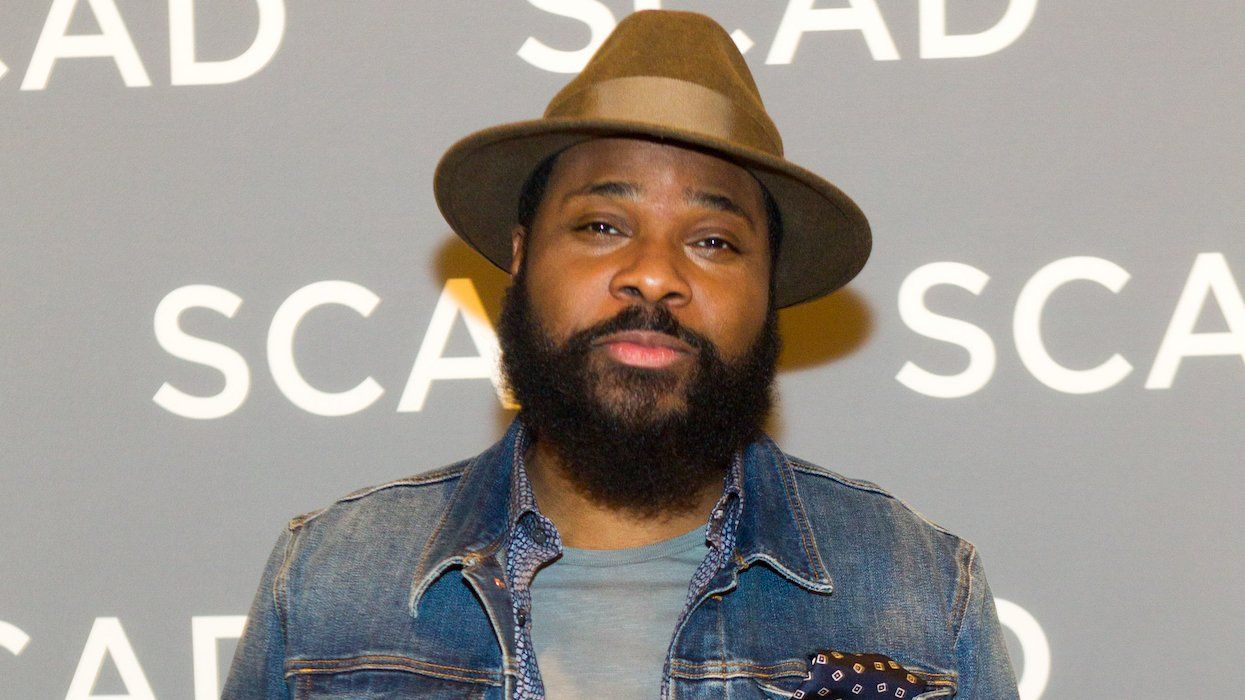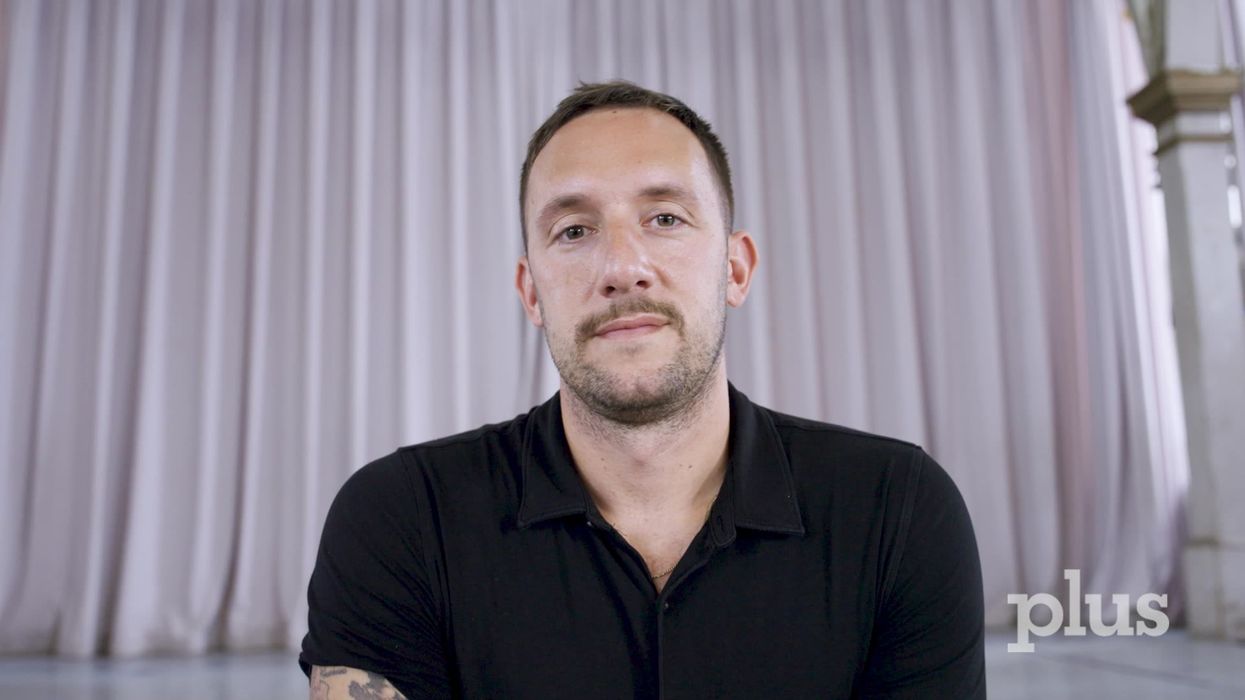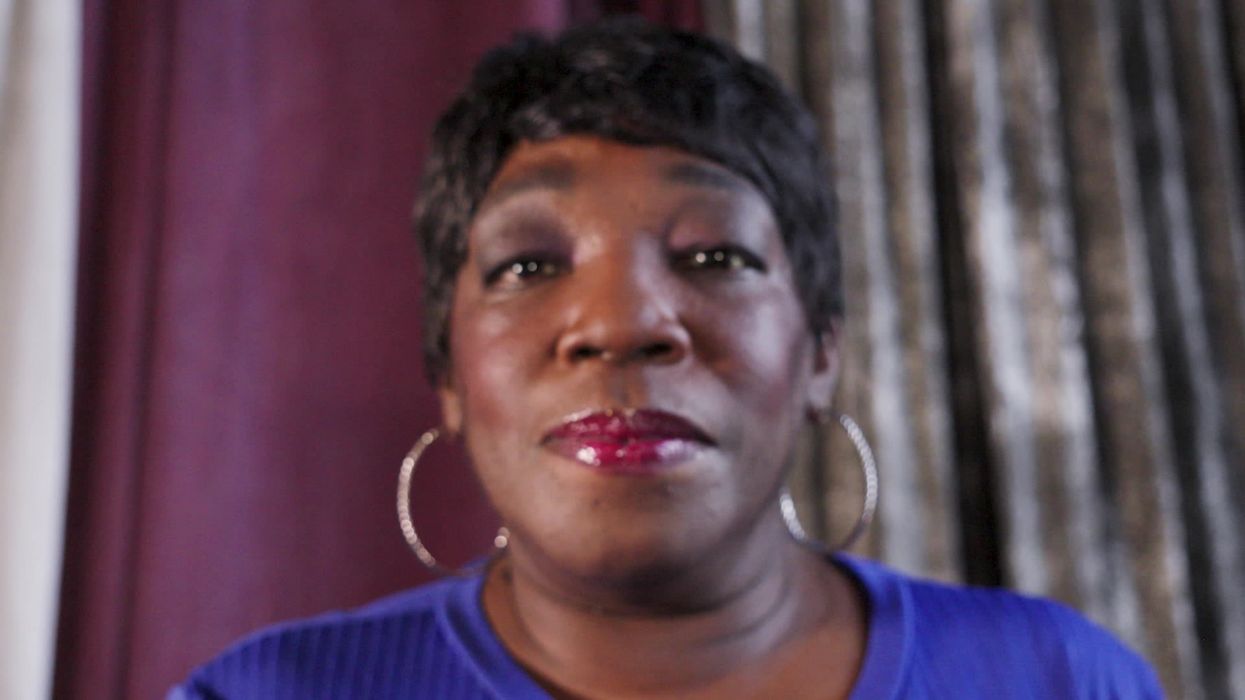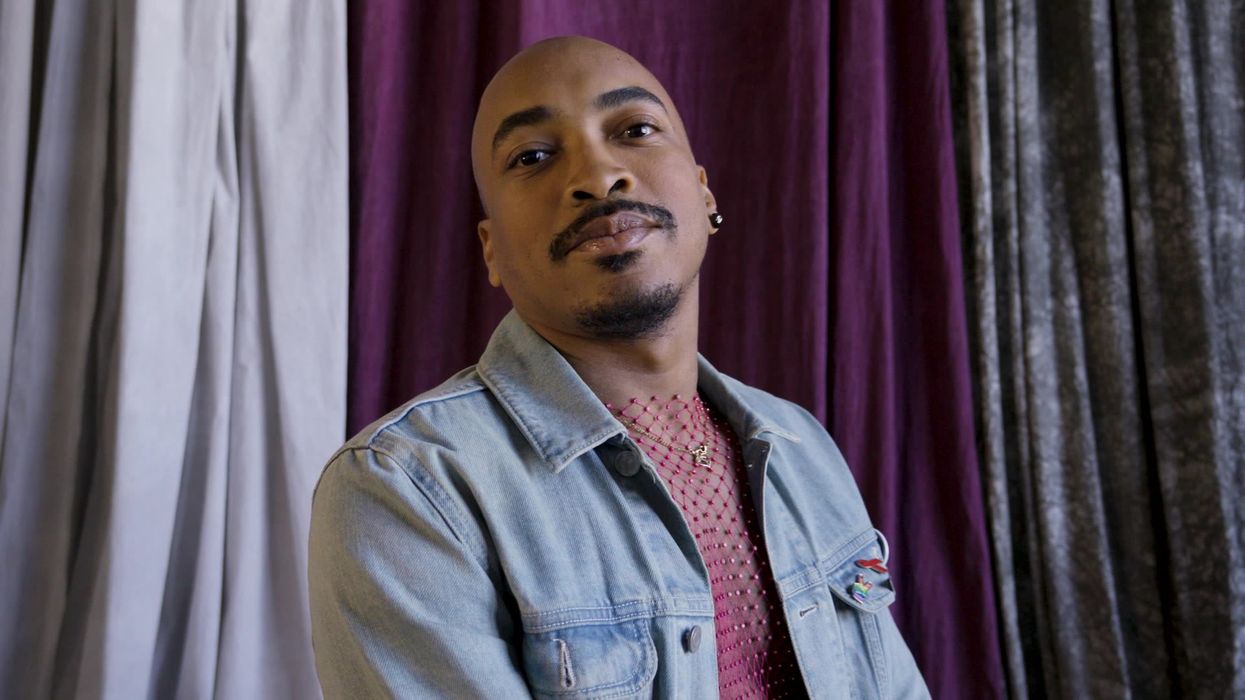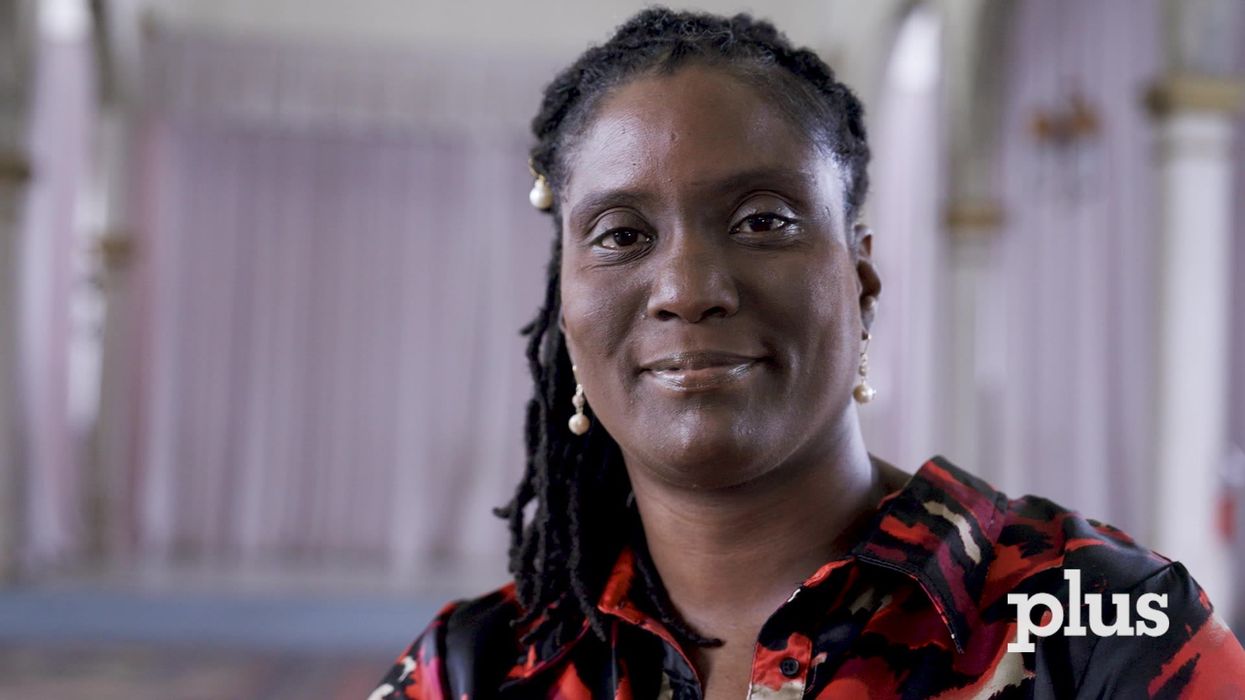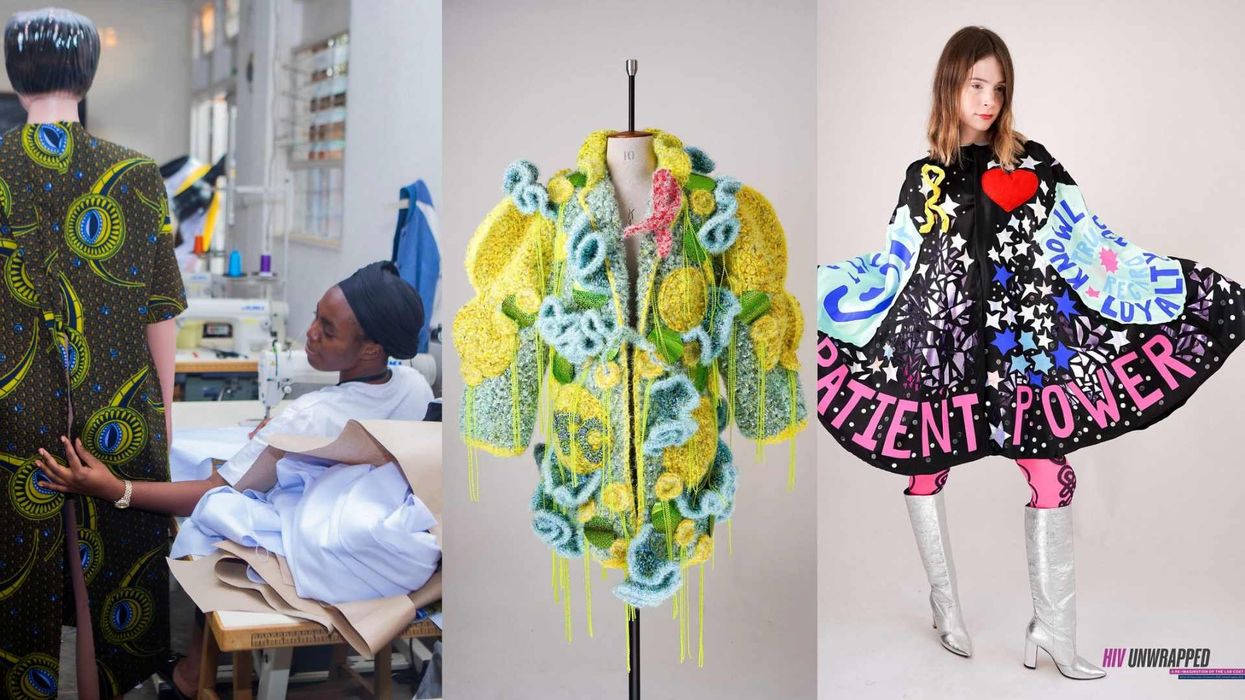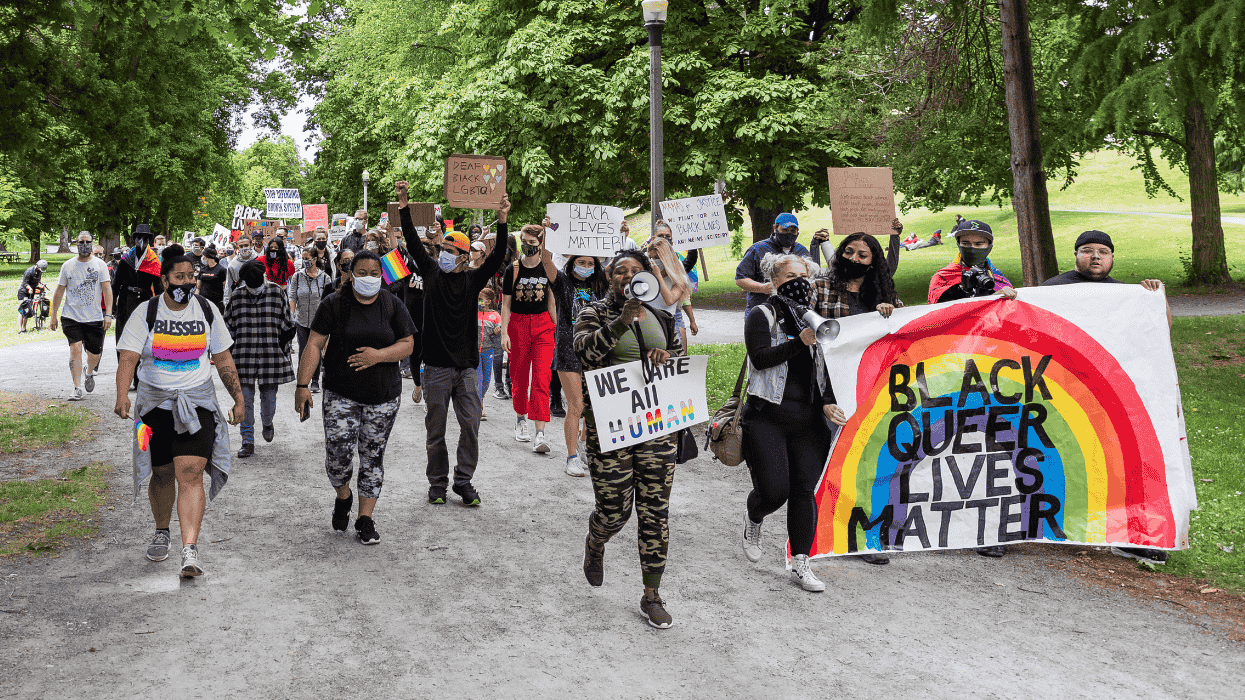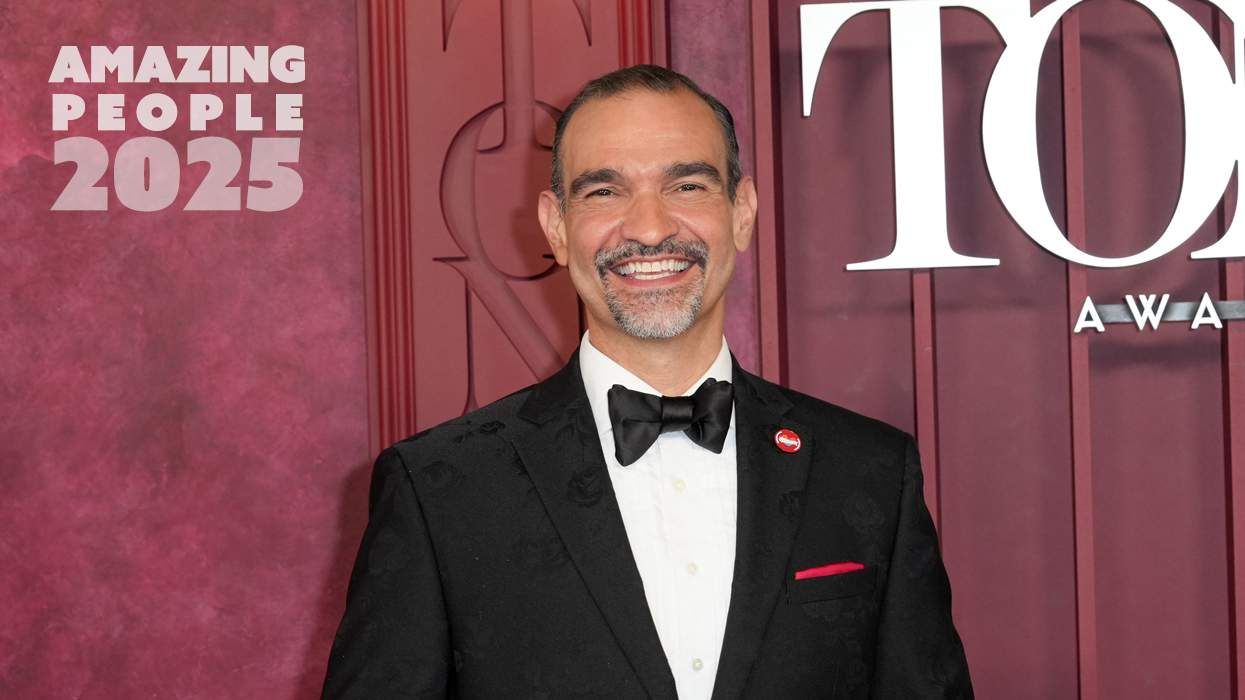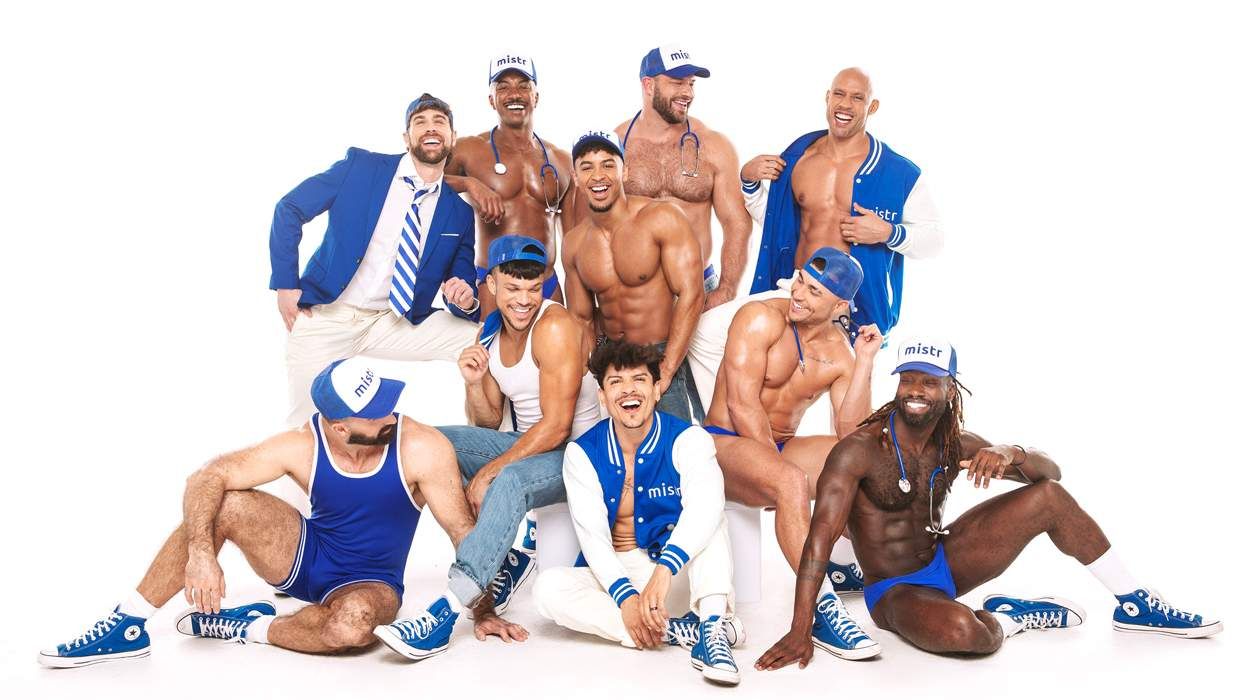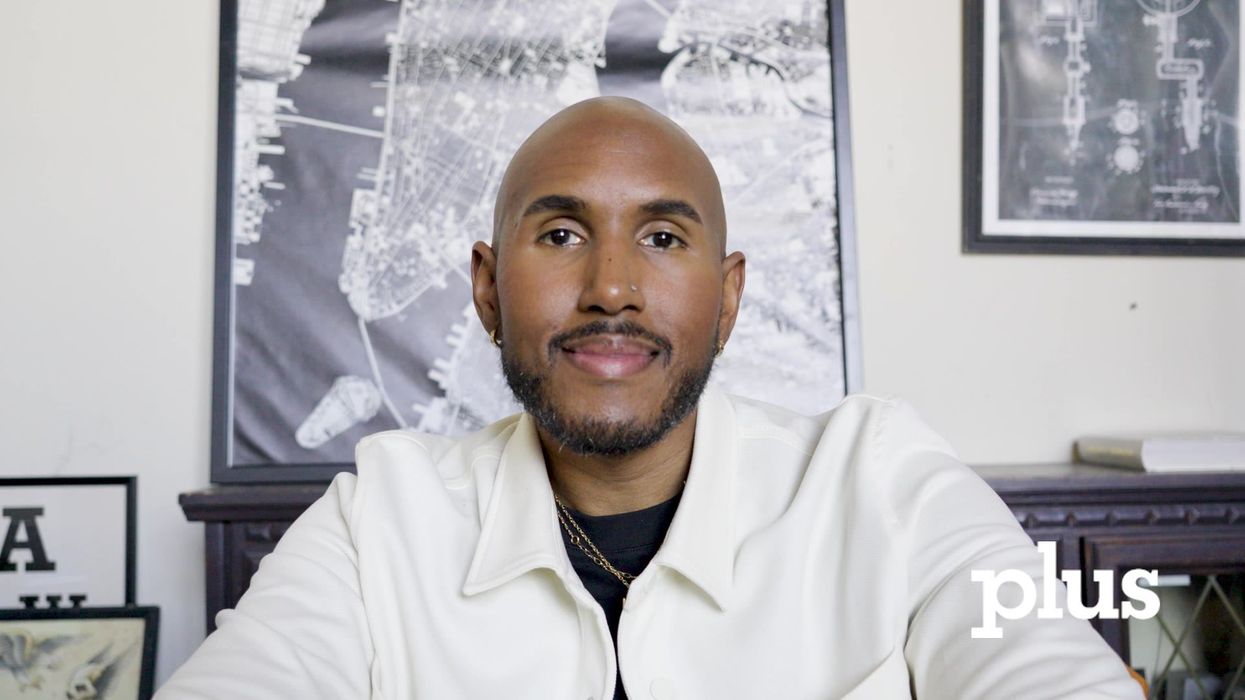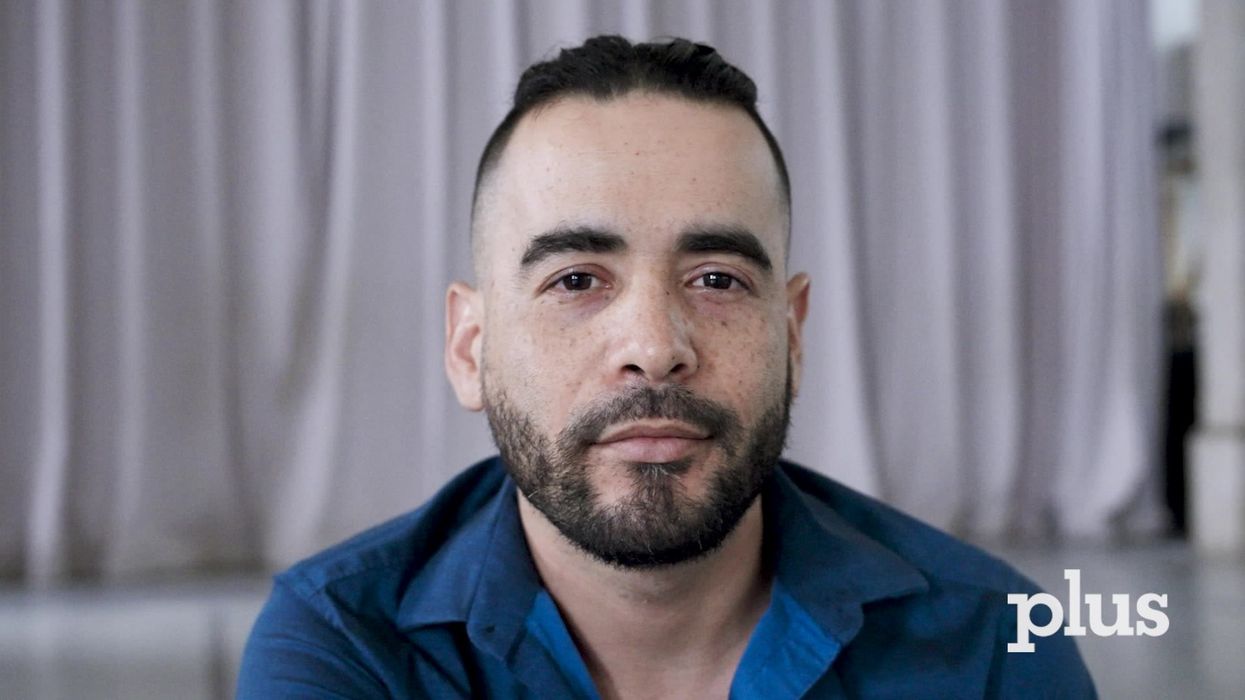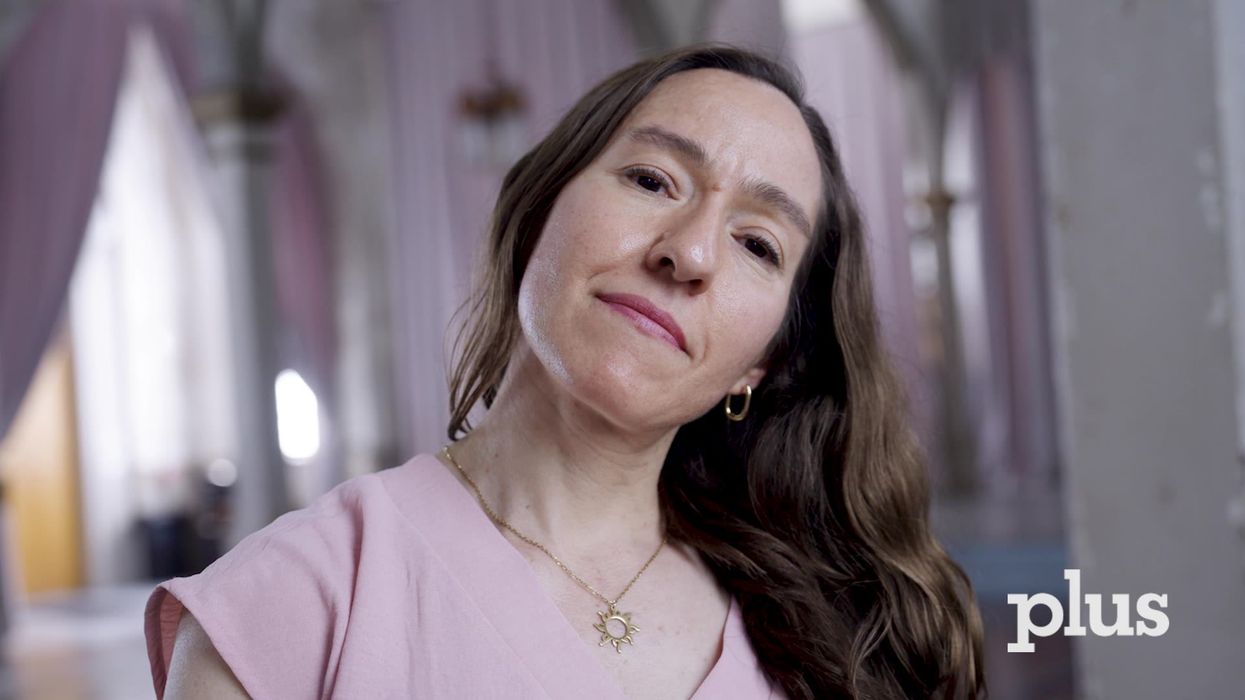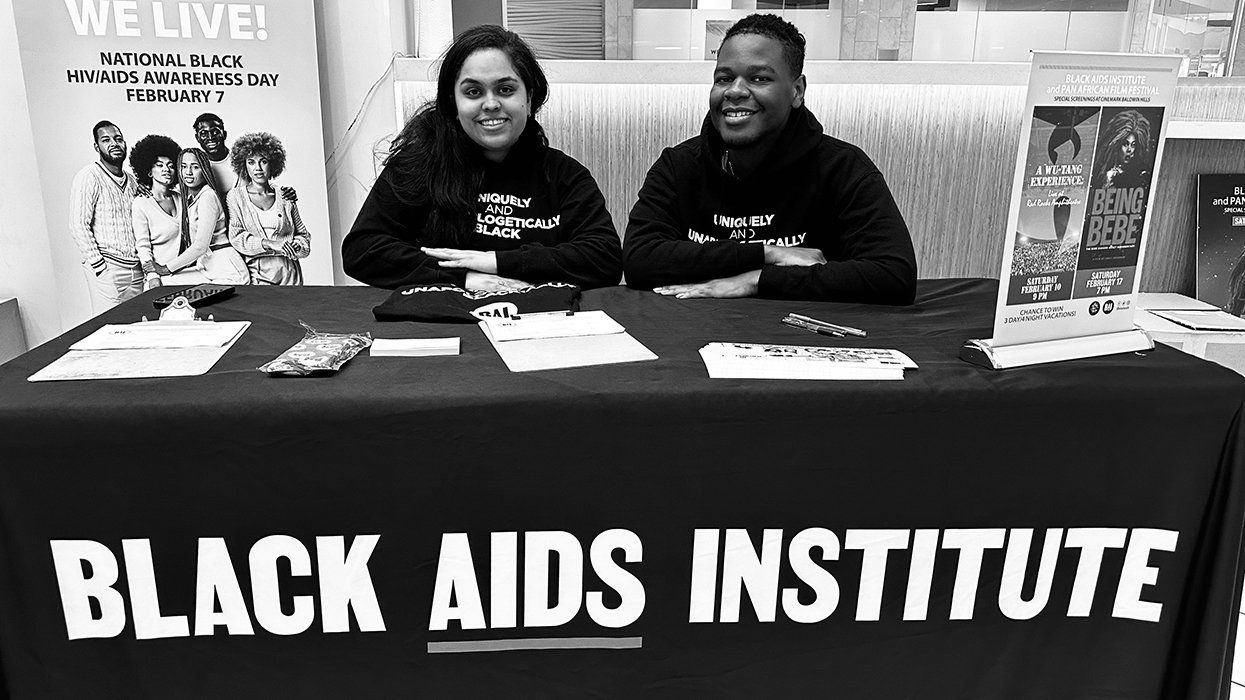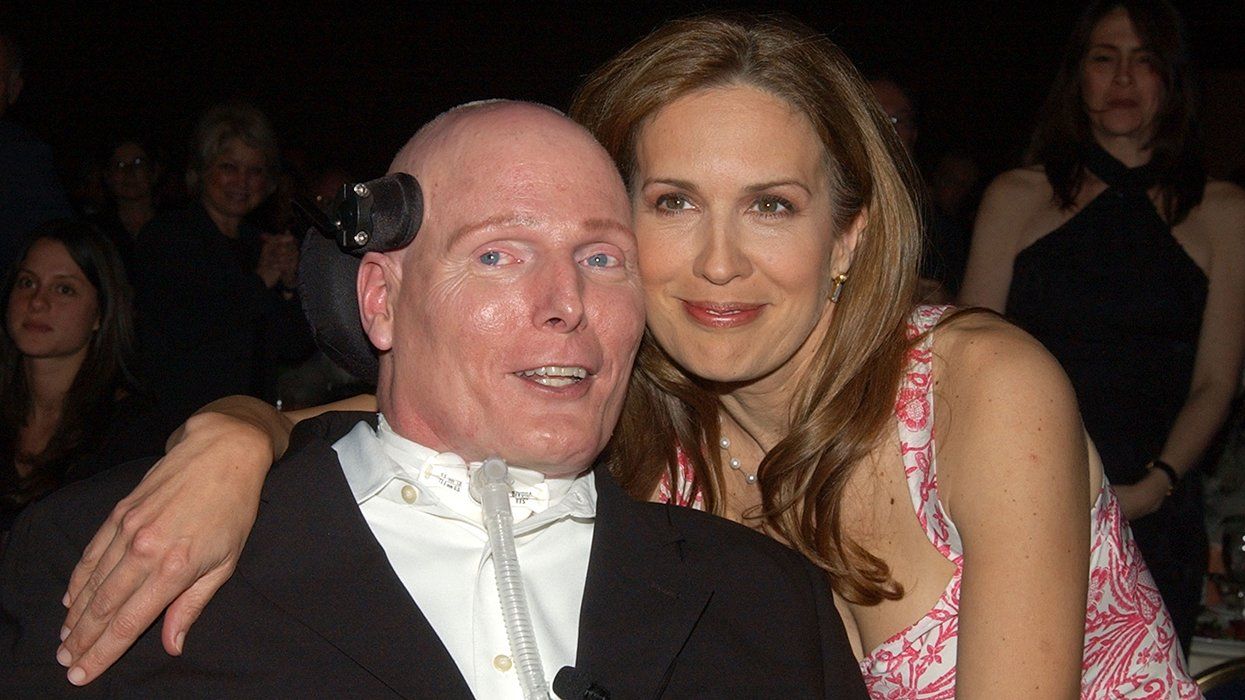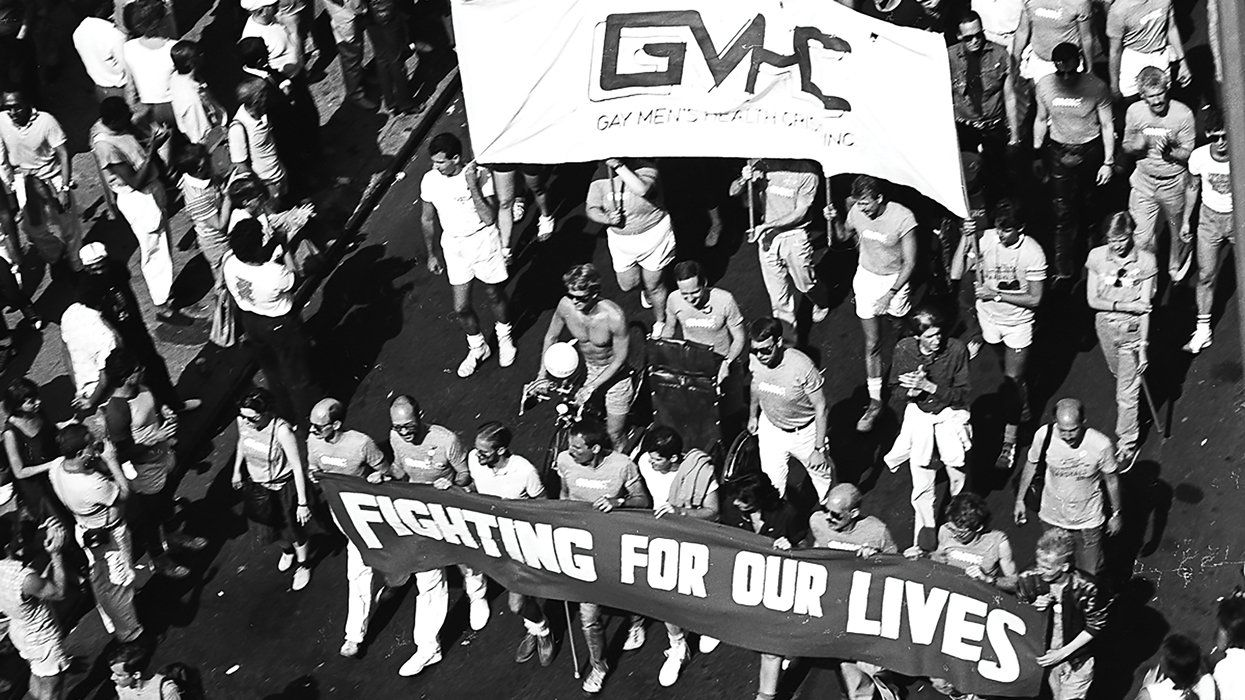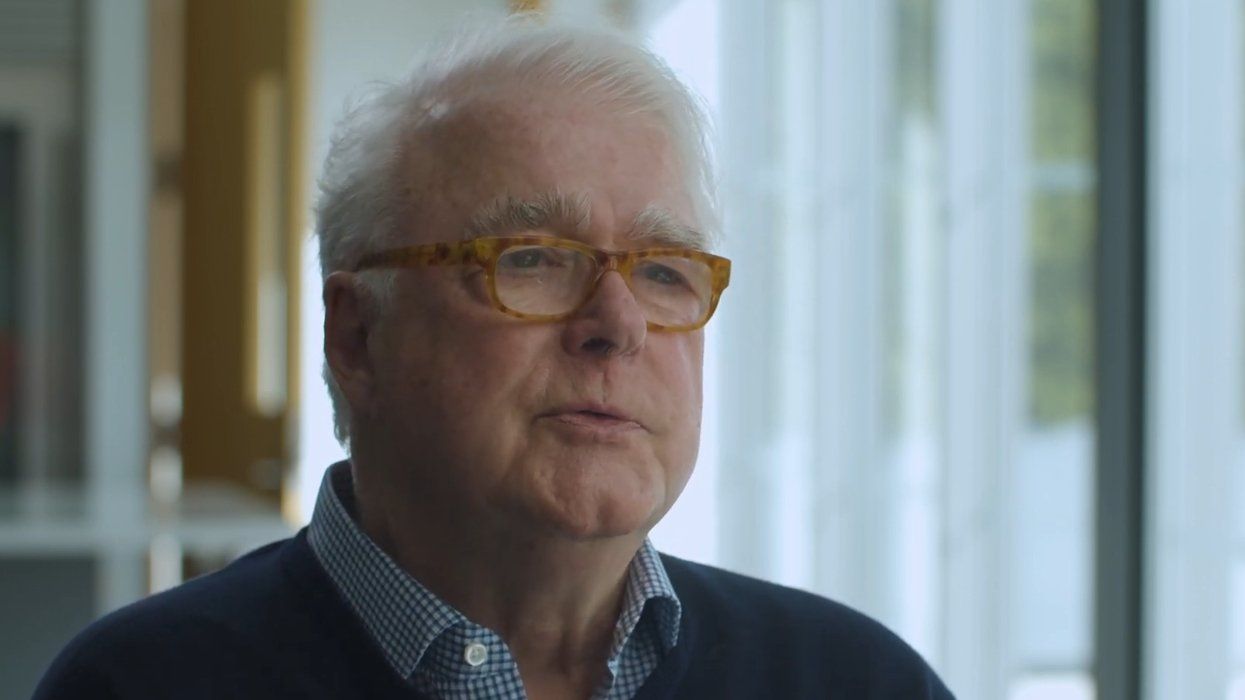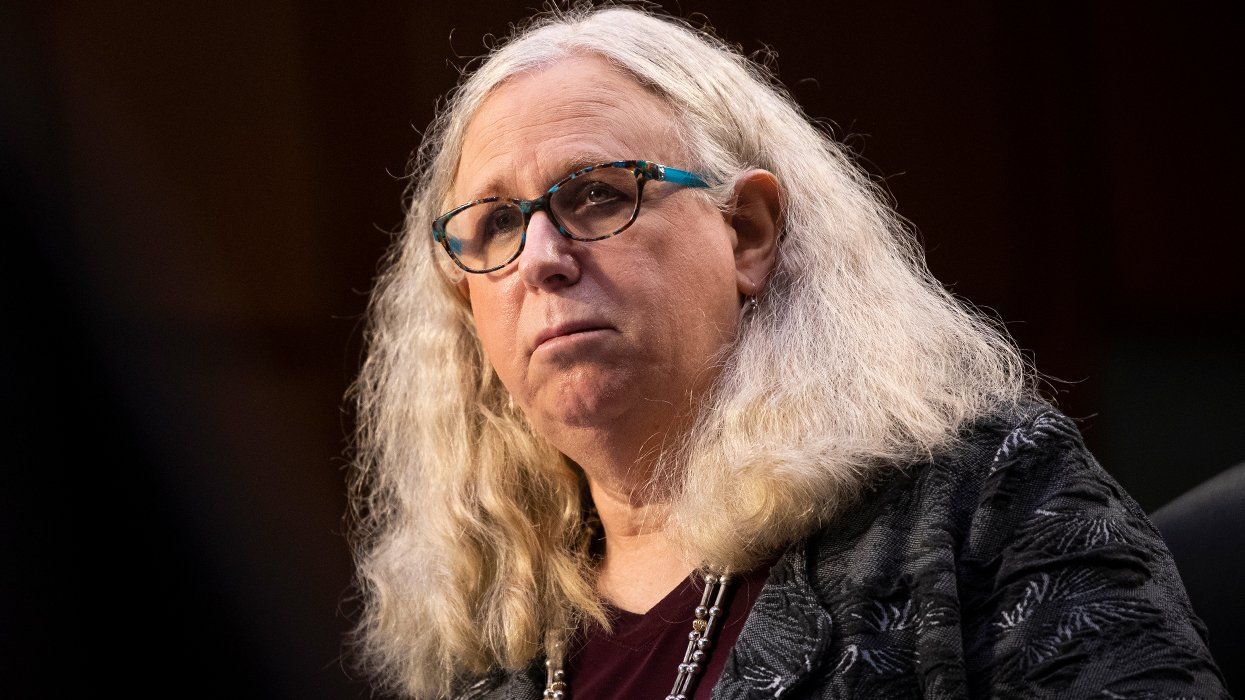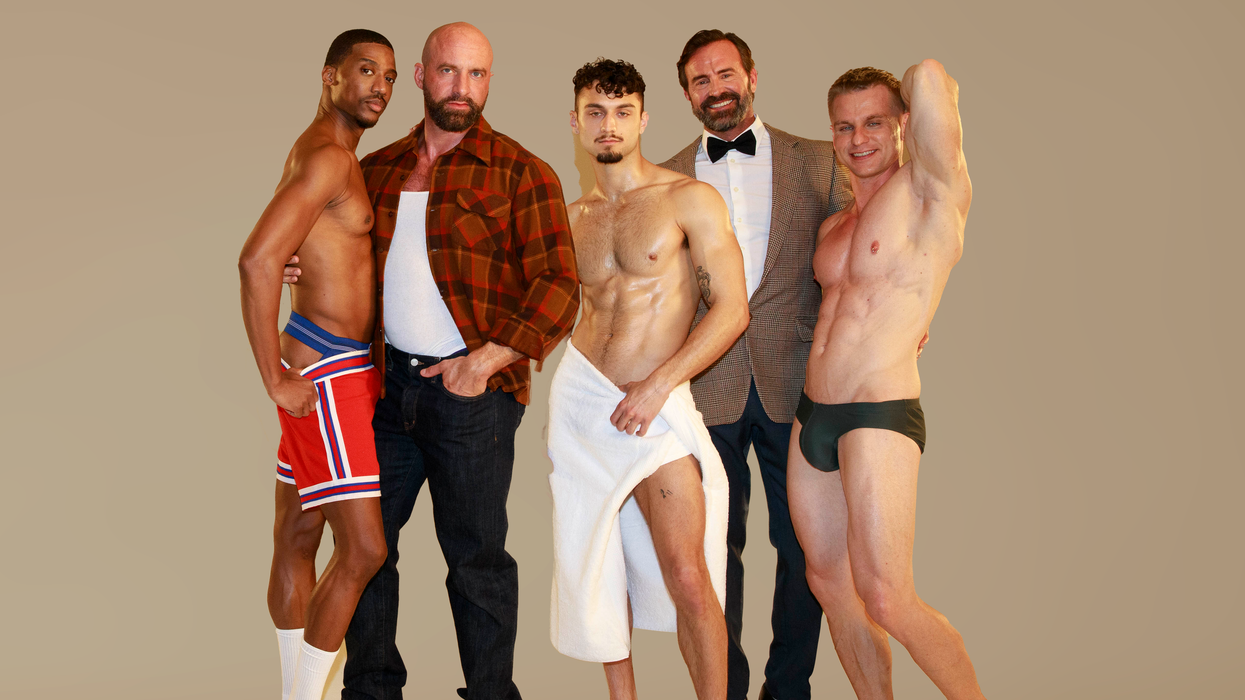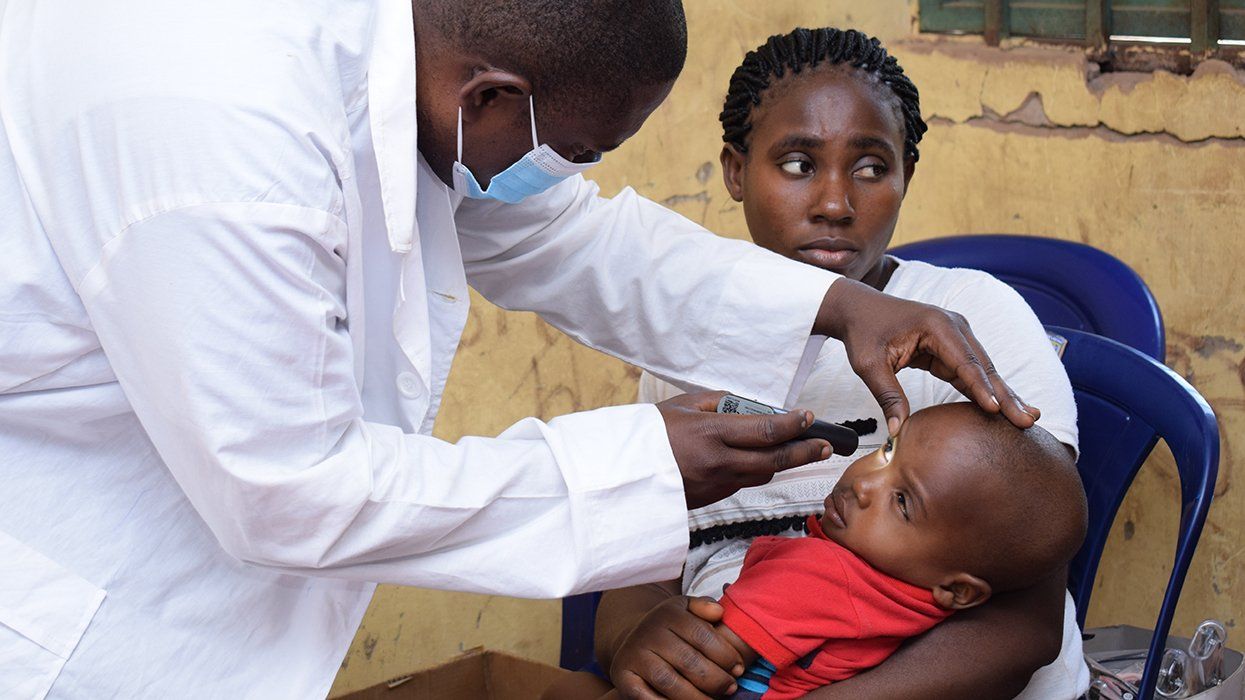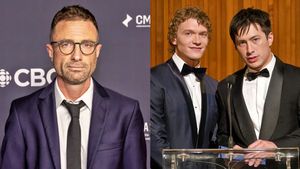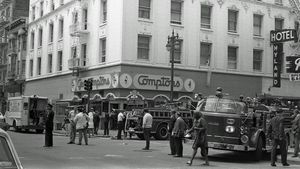 Photos by Jojo Whilden/HBO
Photos by Jojo Whilden/HBO
Actor Matt Bomer, star of the new HBO film The Normal Heart (which premiers Sunday May 25) is blessed with a lot of beauty—the chiseled jaw, the perfect hair, the rock-hard abs — but it is his eyes that capture you first. The ice-blue pools of warmth seem to bore deep into your soul whether you see them in person or on the cover of a magazine. So when he’s crying, crumpled on the floor in a semi-fetal position, too weak to make it to the bathroom alone, covered in shit and piss and Kaposi lesions — the effects of dying of AIDS at a time when the term AIDS wasn’t even coined yet — it’s devastating to watch.
The film, which premiered earlier this summer, packs plenty of star power, including Mark Ruffalo, Taylor Kitsch, Jim Parsons, Julia Roberts, Alfred Molina, Jonathan Groff, Denis O’Hare, and B.D. Wong (and many give impressive performances). But this movie, this role, this moment belongs to Matt Bomer, who serves as the heart of a film that is at turns infuriating, playful, painful, arousing, and mournful.
Directed by Ryan Murphy (the gay creator of hit series Glee and American Horror Story) and written by gay activist Larry Kramer (based on his groundbreaking Tony Award–winning play of the same name), The Normal Heart is an unflinching look at the onset of the AIDS epidemic in New York City in the early 1980s, the nascent gay movement, the disparate sexual politics of the day, and the hysterical fear of a disease nobody had yet named.
Hollywood hunk Ruffalo as Ned Weeks (the pseudonymous character that stands in for Kramer himself) inhabits the activist who helped launch the Gay Men’s Health Crisis and later ACT UP. Ned worries about this so-called gay cancer as friends and acquaintances begin to get sick in droves, many dying suddenly, others locked in isolation in hospitals where even the staff won’t enter their rooms for fear of contagion. Ned aligns himself with no-nonsense Dr. Emma Brookner, who is one of the first to deal with patients with this gay plague, doing so from her wheelchair after surviving childhood polio. Played by Roberts, the plain-talking and acerbic Brookner is modeled on Dr. Linda Laubenstein, an early HIV and AIDS researcher who in 1982 coauthored the first scientific article on the outbreak of Kaposi’s sarcoma among gay men, a sign of what would soon be known as AIDS.
 Ned joins others to begin a group serving men with this disease (the real-life GMHC) and he urges gay, handsome, and closeted New York Times reporter Felix, played by Bomer, to expose the government’s inaction on the medical crisis. It is Felix who ignites Ned’s deepest passions.
Ned joins others to begin a group serving men with this disease (the real-life GMHC) and he urges gay, handsome, and closeted New York Times reporter Felix, played by Bomer, to expose the government’s inaction on the medical crisis. It is Felix who ignites Ned’s deepest passions.
A date that vacillates between political tirade and excitingly tense sexual interplay marks the beginning of the relationship at the movie’s core, a partnership that inspires Ned to push the government for action, even going so far as to out real-life New York City mayor Ed Koch, whom activists like Kramer argued had done too little to combat AIDS because of his own fear of being discovered as gay. (Koch did not come out in his lifetime but was outed posthumously by several sources.)
Rarely can a movie about AIDS be called sexy, but The Normal Heart is, and it is the initial date between Ned and Felix that sets a standard for a new normal — a film that recognizes how integral sex is to gay men’s lives and how fraught it had become with danger once HIV made its widespread appearance. It neither marginalizes nor glorifies (homo)sexuality but shows at least two points on a spectrum (monogamy in one scene, group sex in another) that is as broad as that of heterosexual expression.
The movie will change viewers, perhaps a bit like it changed Bomer. “I don’t know how you could be a part of this movie and not be changed on some level, unless you’re just really a slab of concrete,” the actor says, chuckling with an extremely slight but still perceptible Texas drawl. “It’s so rare that you get to portray a well-written character that’s fully developed and is also part of a story that you hope has some type of social significance, and also that changes you.”
Bomer says that bringing Kramer’s opus to the big screen gave him “a profound sense of gratitude for the people who struggled through this time period and who fought and persisted and rose up — and as difficult and painful as it was, joined together and found their voice and gave us a lot of the rights we have today.”
It is Kramer to whom Bomer also felt the most responsibility. Kramer, who has been too ill to travel, was rushed a print of the film and was said to have been overcome with emotion at the final result. It’s that, not the talk of Emmy nominations, that makes Bomer the most proud.
“For me, getting to meet Larry Kramer was akin to someone getting to meet one of the Beatles,” he says. “I had been reading his stuff since I was a kid. It was sort of my only understanding of what was going on in the world outside of suburban Texas.”
The actor was only 14 when he initially read The Normal Heart, after first reading Kramer’s follow-up play, The Destiny of Me (which is both a sequel and a prequel of sorts, introducing Ned’s childhood in flashbacks and his life as an AIDS crusader later on). Bomer was in awe of Kramer and his work.

“I used to perform scenes from The Destiny of Me in my high school drama class and things like that,” he recalls. “I’m sure people were kind of scratching their head as to why a 14-year-old kid was doing a scene from The Destiny of Me ,but it felt really important to me at the time, and there was a sense of injustice and of God, this neon SOS I got when I read it that I felt needed to be put out there.”
Though he read The Normal Heart in the early 1990s, it wasn’t until he started working in professional theater in 1995, when he was 17, that he had his first direct experience with HIV and AIDS. “Those were my first friendships with people who were struggling with the illness, and as you know, that was a particularly difficult time in the AIDS crisis because there was a lot of medication coming through but also a lot of people who had been holding on for a long time waiting for it to come through,” he recalls. “That was the first time I lost a friend.”
The actor-turned-activist wishes he had known more about HIV and AIDS at the time. “I knew my experience from reading Larry’s works and Angels in America and things like that, but I didn’t know enough,” he says. “They weren’t really teaching us about it in school on a level that I wanted to know and understand. I believe it was mentioned, but there weren’t a lot of specifics as to how it could be transmitted or how to be the most supportive friend you could be. It was perceived as something that would be outside our reality…but once it was in my reality, I thought, I wish I knew more.”
He lost more theater friends to AIDS over the years, and he met poz friends who were healthy on antiretrovirals, all the while trying to bring visibility to all of their lives.
“I guess it was the first thing I felt like an activist about,” Bomer says. “Maybe the reason I was doing The Destiny of Me at the theaters in Spring, Texas, was my own way of bringing awareness to it at that time. So it was just a cause that always stuck with me, and I only grew more passionate about it as I got older, because being in the theater, it was part of our community.”
He always felt like telling Kramer’s story was important, maybe more so now that the author-activist is almost 80, so he took Kramer a batch of cupcakes and sat and talked with him for hours in his apartment about Felix and Ned and their world. “He gave me some important pointers. And I shared some of the research, which I’d done with him, and he sort of just steered me in the right direction.”
Kramer was on set when Bomer filmed his first scene with Ruffalo, at The New York Times’ office, which dramatizes the first meeting between Kramer and his late boyfriend. Bomer had a flicker of doubt, of worry that he couldn’t pull it off. There were many moments like that, he says, before and during filming.
“I think it’s why I wanted to play the role,” he admits. “I feel like that’s always a good sign as an actor. That’s always a good place to start from. Because then you know you have to push yourself and stress your parameters as an actor and as an artist and dig deeper than maybe you had to before — especially in this medium. I think there were a lot of things that terrified me about it. But I think at my core I knew I cared enough about the material…and Larry and the characters and the world, and I knew that I would put in the work that I needed to, to do the best that I could. But yeah, there were a lot of scenes that scared the shit out of me.”
For Bomer, there were just as many of those scenes in the first half of the script, before Felix gets sick, as there are in the second half. “I remember being terrified about the New York Timesscene. It was the first scene up, and I thought, Oh, shit. Here we go.”
Kramer was also present a month later, Bomer notes, “when we shot the April shower scene, which was one of the brighter spots in the film, where the organization [GMHC] is finally getting some traction and building some momentum and their fundraising efforts are starting to actually bear fruit…and it was also the day that [the Defense of Marriage Act] was overturned and we were able to celebrate together and celebrate him and all the work he had done to make that day possible. It was just one of those moments where you felt like you were in the right place at the right time, which can be so rare. Getting to see Larry there that day was just one of those experiences I’ll never forget.”
For his part, Kramer has told the filmmakers he’s awed by the film as well. “Once I heard that Larry was happy with it, I felt that was everything to me; I think that was everything to all of us who worked on this,” Bomer says. “So I breathed a sigh of relief and just said a prayer of thanks. You don’t want to tell someone’s story and have them not be happy about it.”
 One reason the film is so good is that Ryan Murphy — the man who finally brought this story to the screen nearly 30 years after it was first produced on stage — was, as Bomer says, “in cahoots” with Kramer, sharing Bomer’s reverence for a man who fought for LGBT rights and for the rights and visibility of people with HIV and AIDS at all costs, including friendships and public partnerships with people who thought he was too angry, aggressive, or unwilling to play the game. Kramer, in fact, was booted from his own organization, GMHC, for being just, well, Larry Kramer.
One reason the film is so good is that Ryan Murphy — the man who finally brought this story to the screen nearly 30 years after it was first produced on stage — was, as Bomer says, “in cahoots” with Kramer, sharing Bomer’s reverence for a man who fought for LGBT rights and for the rights and visibility of people with HIV and AIDS at all costs, including friendships and public partnerships with people who thought he was too angry, aggressive, or unwilling to play the game. Kramer, in fact, was booted from his own organization, GMHC, for being just, well, Larry Kramer.
“Ryan was gracious and involved him in the process, and he never let it stray from the source,” Bomer recalls. “He wanted it to be Larry’s story as well. He just brought such a level of great emotion and so much heart to the set from the first day on that it sort of trickled down from there on to everybody, whether they lived through this particular time period or not.”
Ruffalo did the same, spending a great deal of time with Kramer, which allowed him to completely channel the larger-than-life, often curmudgeonly thought leader, who has lived with HIV for decades. “It was so fun to get to play off of because I would see his little idiosyncrasies and gestures,” Bomer says. “And it was really fun and spontaneous, and he was just a dream to collaborate with.” Ruffalo nails Kramer’s quirks, his facial tics, his ability to bring even lighthearted conversation back to serious social issues. Ruffalo helped usher this film into being decades after Barbra Streisand first tried and failed. And he exposes something we don’t see much of behind the agitation of Kramer’s public persona — his sentiment, romanticism, and humanity.
The most telling is their initial date scene, a frustrating mélange of aggressive rabble-rousing and nuanced sexual tension that Ruffalo and Bomer make appear seamless. “If you look at the date scene on paper, Ned is going off on these tangents and the conversation keeps getting redirected and so there are a lot of little subtle shifts within that scene that I had to map out — and also be present to what was happening on the day the cameras were rolling,” says Bomer.
To see Bomer, whose only gay roles so far have been a bit part on The New Normal and one in the stage play 8,flirt and seduce Ruffalo is powerful. But when these two attractive Hollywood A-listers of leading-man status actually end up having sex and the camera doesn’t immediately cut away to gauzy curtains or some other de-gaying cinema trope, it’s wonderfully jarring. This is a film for all adults, but it’s not one that waters down gay sexuality to appeal to the masses. It defies you to turn away.
“Whenever you’re dealing with big celebrities like that on a set, the ball is really in their court to extend the olive branch of comfortability, and Mark was so amazing about that — he doesn’t bring a lot of ego to the set,” says Bomer of the duo’s intimate scenes. “I mean, from day one, he treated me with such profound respect and patience, so I felt really comfortable being able to go to those places with him. Because regardless of the type of intimate scene you’re filming, it’s never a terribly comfortable situation. No matter what you’re doing, really you’re just trying to commit to the story from ‘action’ ‘ to ‘cut.’ I think we both knew, coming from theater, that we didn’t have six weeks of rehearsal or three weeks of rehearsal to piece things together, and so from the very beginning, we related to each other more or less in character…we tried to stay in that zone, so when it became a professional thing we didn’t have to suddenly leap into each other’s arms.”
That helped to underscore the love, the romanticism between the two men, especially near the end of the film, when the parallels between the 1980s quest for recognition and the current era’s fight for marriage equality come into stark clarity.
“I think that my understanding of unconditional love and compassion has certainly changed for the rest of my life,” Bomer admits.
But The Normal Heart’s counterpoints to modern culture go beyond relationship recognition. When Ned criticizes Felix for not writing about the gay “cancer” because he’s closeted, Felix shoots back at him, saying no, he doesn’t write about medical stuff but he does write about gay directors, gay designers, gay musicians, and so on, even if they aren’t called “gay” in print. For the role, to get inside Felix’s professional mind-set, Bomer started his research at The New York Times, trailing a reporter for a few days and talking to staffers who’d been there since the late ’70s and early ’80s “and had a lot of stories from the administration of that time,” Bomer says. “The climate was obviously very different there at that time, and exposing certain aspects of your personal life were much riskier than they probably are today. That climate was important for me to understand in terms of where Felix was and his life at that time…how he [felt he] had done what he could, given the circumstances he faced. I think there are certainly parallels today still and I think that conversation is still relevant, but you know, it’s also highly subjective.”
For a kid from the heartland — the son of a Dallas Cowboys football player and his wife, who is himself now married with three kids all under the age of 10, Bomer’s backstory sounds very all-American. But is it?

“I have been through an incredible amount of struggles and difficulties in my life, so to paint it as some rosy picture would be completely false,” he admits. “And I’m thankful for all those experiences because I think they’ve given me a little bit more depth or compassion or understanding than I would’ve had, had I not gone through them all. So I certainly have an understanding of the all-American experience. I guess I have it from an outsider as well as an insider.”
There’s a scene in the film that makes it seem like Felix might share this perspective, and it’s a moment that perhaps only people who lived through the ‘80s and ’90s might really understand in a visceral way: Bomer is on the subway, he has a small Kaposi’s sarcoma lesion on his face and another on his forehead beneath a knit stocking cap. He sees a woman staring at him and he reflexively pulls down the cap (an action Bomer inadvertently improvised that Murphy decided to leave in). Nearby is another gay man, ravaged by Kaposi’s, emaciated, and probably near death. Bomer shows an amazing range of emotions simply through his eyes, what it was like to stare into the abyss and see your future, a deadening trap of purple lesions and wasting.
“That scene, from the first time I read it, it really resonated with me because it is such a glimpse for Felix,” the actor recounts. “I mean, even though he does have Kaposi’s at that point, he’s still at a hopeful place in terms of where he is with his illness; he’s still going to work. I just tried to be ruthlessly present and available. At the time I had been living on my own — trying to create his physical reality for myself — for about a month. So I tried to just bring all of that to the work and then just get out of my own way and respond to this amazing actor they’d hired to play this man on the subway. Felix is someone who was appreciated aesthetically for the majority of his life, and you know when I first came onto the subway, a girl stared at me, and I remember pulling my hat over the lesion. Ryan was so present and available as a director that he saw that and he made sure that we covered that in the scene. We did a bunch of different takes on that and played with a lot of different emotions in response to Felix’s glimpse into the future, and the rest was really up to the editors.”
His transformation wasn’t complete until the second round of filming. Production was halted for several weeks so Bomer could transform himself into Felix toward the end of the film, as the man is dying of AIDS complications. He lost 40 pounds (partly by doing a two-week cleanse at We Care Spa in Desert Hot Springs, Calif., in which he only ingested alkalized water, juice, tea, and enzymes). He went to live on his own for a month, in part because he didn’t want his kids to see him wasting away.
 “I felt a tremendous responsibility in playing this role, and part of it was creating that physical reality for the second half of the film,” he admits. “It was sort of one month of casual weight loss and then two months of really aggressive weight loss, and that’s when I left my family, toward the end of the second month, and then just lived on my own in New York and really tried to focus on really solely what Felix was going through. I obviously consulted someone and I prepared our kids as best I could, but I felt it was best for me to be away at that point in time until I sort of finished the project and could start eating again.”
“I felt a tremendous responsibility in playing this role, and part of it was creating that physical reality for the second half of the film,” he admits. “It was sort of one month of casual weight loss and then two months of really aggressive weight loss, and that’s when I left my family, toward the end of the second month, and then just lived on my own in New York and really tried to focus on really solely what Felix was going through. I obviously consulted someone and I prepared our kids as best I could, but I felt it was best for me to be away at that point in time until I sort of finished the project and could start eating again.”
Though this is his first big gay role, and a doozy at that, he says he’s “never avoided gay roles on my own volition. I would go on auditions. And if I ever passed on something, it was because it wasn’t a role I related to; it certainly wasn’t because the character was gay.” He says the roles just didn’t come to him, perhaps that’s Hollywood’s way of keeping the glass closet intact. Though he’s been out in his private life for many years, he didn’t officially come out as a gay man in Hollywood until 2012, when he thanked his husband, publicist Simon Halls, and their three sons — Kit, Henry, and Walker—while accepting an award for his HIV charity work from the Desert AIDS Project.
The 36-year-old star of USA’s White Collar told Out magazine recently, “I felt a responsibility to Simon and to our kids to be able to live with integrity and not have some strange split psychology of ‘This is who my dad is at home, and this is who he is to the public.’ That trumped any type of professional repercussions that it could have had… Whatever happens from this point on says a lot more about the business and society than it does about me.”
The same could be said about performers who are out about being HIV-positive. When will an actor of his stature who is living with HIV feel safe enough to come out? “Gosh, that’s a really interesting question,” Bomer says, pausing in thought. “And you know, it’s hard to say. I would like to believe that tolerance and acceptance has profoundly changed in the past decade for sure, so hopefully soon. I mean, I can speculate, but I would really just be theorizing and I’m probably too ignorant to be doing that. But whoever it is [that does come out as poz] and whenever it is, if I am still around, I will stand there beside them and give them a standing ovation and thank them, that’s for sure.”
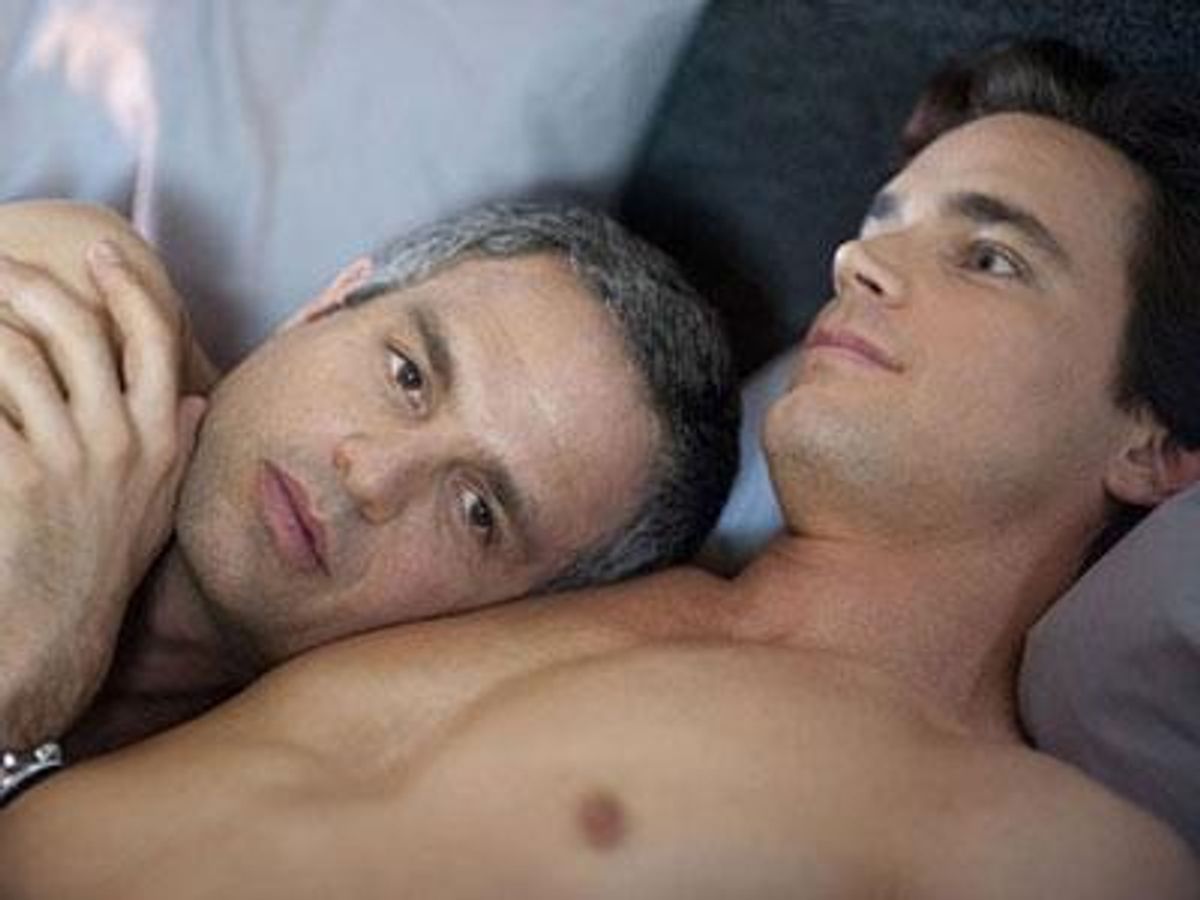
 Photos by Jojo Whilden/HBO
Photos by Jojo Whilden/HBO Ned joins others to begin a group serving men with this disease (the real-life GMHC) and he urges gay, handsome, and closeted New York Times reporter Felix, played by Bomer, to expose the government’s inaction on the medical crisis. It is Felix who ignites Ned’s deepest passions.
Ned joins others to begin a group serving men with this disease (the real-life GMHC) and he urges gay, handsome, and closeted New York Times reporter Felix, played by Bomer, to expose the government’s inaction on the medical crisis. It is Felix who ignites Ned’s deepest passions.
 One reason the film is so good is that Ryan Murphy — the man who finally brought this story to the screen nearly 30 years after it was first produced on stage — was, as Bomer says, “in cahoots” with Kramer, sharing Bomer’s reverence for a man who fought for LGBT rights and for the rights and visibility of people with HIV and AIDS at all costs, including friendships and public partnerships with people who thought he was too angry, aggressive, or unwilling to play the game. Kramer, in fact, was booted from his own organization, GMHC, for being just, well, Larry Kramer.
One reason the film is so good is that Ryan Murphy — the man who finally brought this story to the screen nearly 30 years after it was first produced on stage — was, as Bomer says, “in cahoots” with Kramer, sharing Bomer’s reverence for a man who fought for LGBT rights and for the rights and visibility of people with HIV and AIDS at all costs, including friendships and public partnerships with people who thought he was too angry, aggressive, or unwilling to play the game. Kramer, in fact, was booted from his own organization, GMHC, for being just, well, Larry Kramer.
 “I felt a tremendous responsibility in playing this role, and part of it was creating that physical reality for the second half of the film,” he admits. “It was sort of one month of casual weight loss and then two months of really aggressive weight loss, and that’s when I left my family, toward the end of the second month, and then just lived on my own in New York and really tried to focus on really solely what Felix was going through. I obviously consulted someone and I prepared our kids as best I could, but I felt it was best for me to be away at that point in time until I sort of finished the project and could start eating again.”
“I felt a tremendous responsibility in playing this role, and part of it was creating that physical reality for the second half of the film,” he admits. “It was sort of one month of casual weight loss and then two months of really aggressive weight loss, and that’s when I left my family, toward the end of the second month, and then just lived on my own in New York and really tried to focus on really solely what Felix was going through. I obviously consulted someone and I prepared our kids as best I could, but I felt it was best for me to be away at that point in time until I sort of finished the project and could start eating again.”

